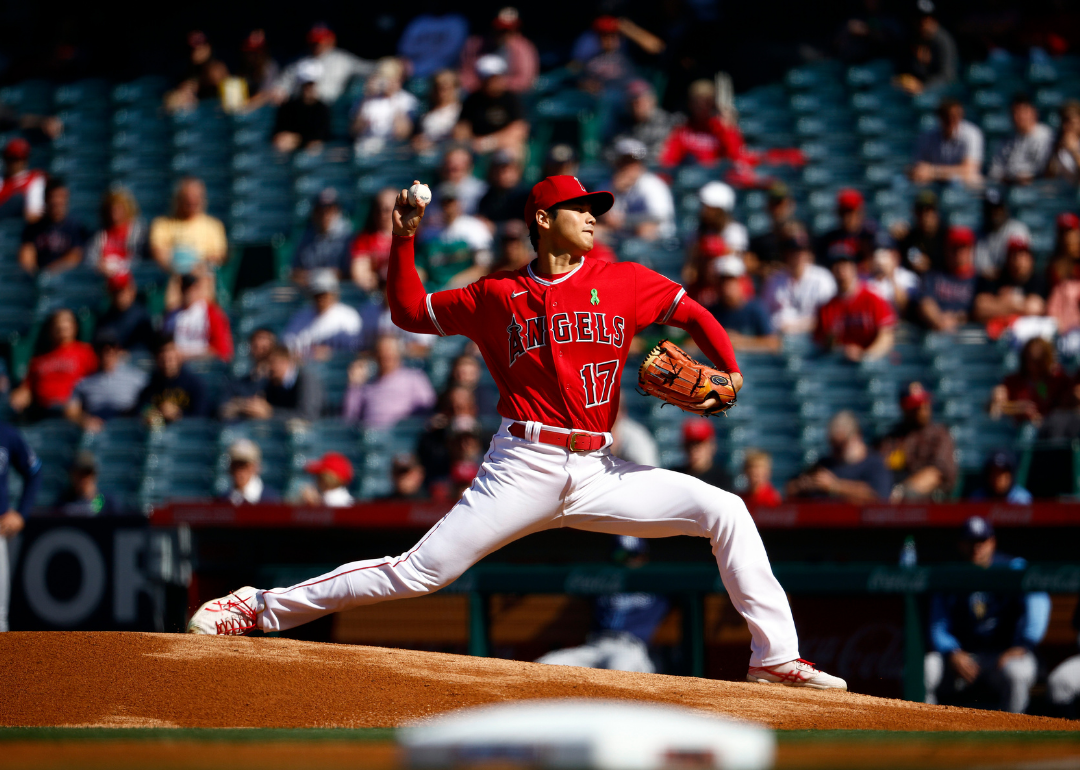
Tracking the history of baseball's two-way players
Two-way players—those who can pitch and hit—are a rare beast in the major league baseball canon. While the Los Angeles Angels' Shohei Ohtani has wowed fans recently by succeeding as a pitcher and a hitter, his versatile skills are a true rarity in the majors.
It's no surprise. Pitching and hitting are two separate skill sets and the increased focus on specialization in professional sports means players will tend to focus on the area in which they excel. Football, another sport with the potential for two-way players, has also experienced two-way rarity in recent decades, although the 1990s saw pro baseball player and superstar cornerback and wide receiver Deion Sanders excel in multiple roles.
Stacker wanted to figure out just how rare two-way baseball players have been in the professional ranks. So we took a historical deep dive using research from a variety of sources, including Baseball-Reference.com, the Society for American Baseball Research, and the Major League Baseball website. To provide a starting point for research, we also attempted to quantify two-way players by tabulating those who both pitched 10 games and made 200 or more plate appearances in a single season, using data from Stathead.
Read on through for a peek into the evolution of the two-way player, as well as a glimpse at which players have performed the role the best throughout baseball history.
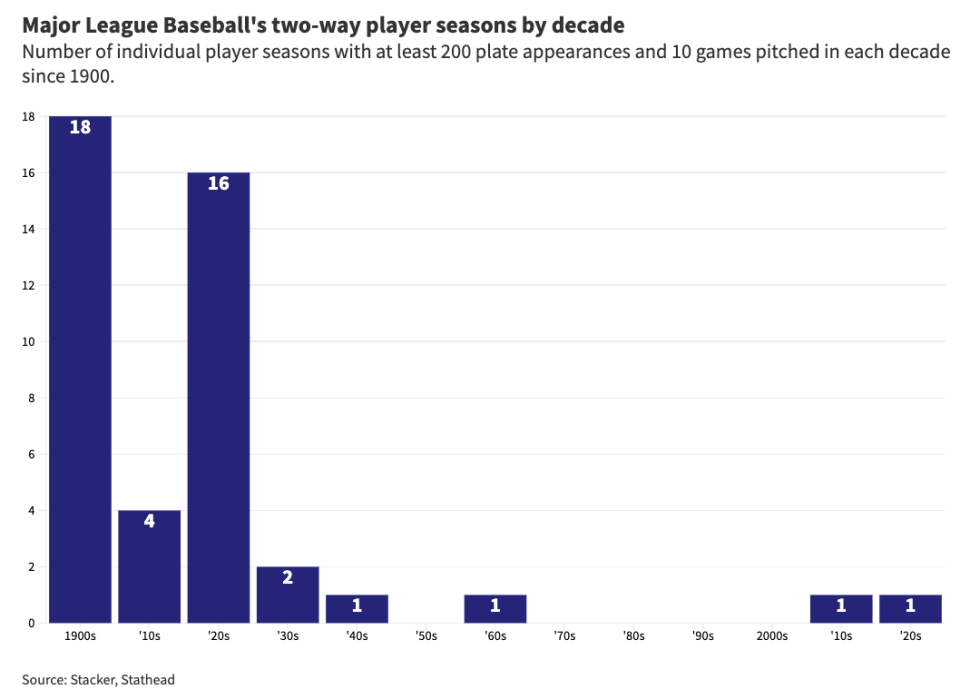
Two-way players are a rarity post-1930
In total, 44 individual player seasons have achieved 10 games pitched and 200-plus plate appearances since 1900, according to data Stacker compiled via Stathead.
Those 44 seasons are split between 35 different players, with just one player—Bullet Rogan of the Kansas City Monarchs—tabulating more than two seasons. Generally, two-way players seem to lean toward a proficiency in pitching, tallying up the 44 individual seasons’ total wins above replacement, or WAR, results in 65.1 WAR for pitching and 50.8 WAR for batting. The two-way player role was effectively dead by 1930, as a grand total of three players have picked up qualifying seasons since then.
To make this chart palatable, we started with the year 1900, commonly accepted to be the beginning of the dead ball era. Had we widened the dataset to the 1800s, nearly 300 players would have been added; pitchers frequently played positional roles in the 19th century and often took on larger pitching workloads.
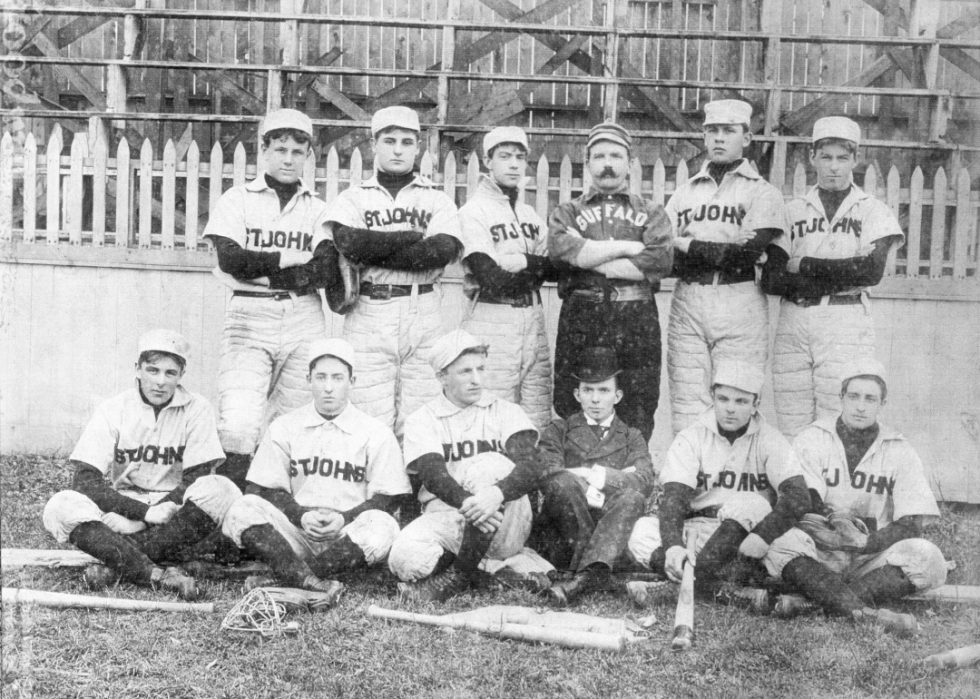
Pre-1900s: Two-way players run rampant
As just mentioned, pitchers generally had more plate appearances during the 19th century. Pitching rotations were in their infancy during the 1800s because teams often only had nine or 10 players available, and pitching depth remained fairly shallow even as rosters grew. This resulted in situations where pitchers would work every game, or every other game, substantially increasing their chances for plate appearances.
However, a two-way player list on Baseball-Reference.com does shed light on a few notable two-way players from the pre-1900 era. Bob Caruthers posted some gaudy numbers during his career between 1884 and 1893, including holding one of the best winning percentages among pitchers with at least 200 wins and a career batting average of .282. Guy Hecker completed the pitching triple crown in 1884. Two years later, Hecker won the batting championship. There was also Hall of Famer John Montgomery Ward, who pitched baseball’s second perfect game in 1880, before becoming a regular shortstop later in the 1880s.
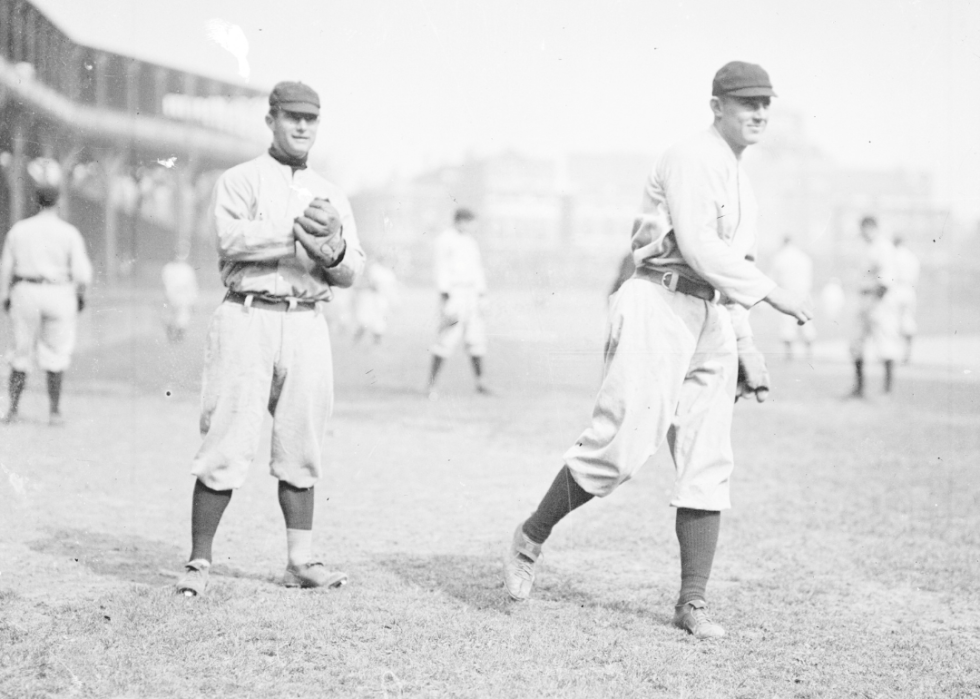
Early 1900s: The dead ball era signals a decline
As pitching rotations and position specialization became more prevalent, the dead ball era of roughly 1900 to 1920 saw an almost immediate decline in the role of the two-way player. In the century’s first decade, 16 different players contributed qualifying two-way seasons, with at least 10 games pitched, and 200-plus plate appearances. In the next decade, the total was just three.
Notable two-way seasons during this timespan include Doc Crandall of the Federal League’s St. Louis Terriers. In 1914, Crandall tossed 196 innings en route to a 13-9 record and batted .309, while making 348 plate appearances. Doc White also deserves a mention for achieving 10-plus games pitched and 200-plus plate appearances twice, in 1902 with the Philadelphia Phillies and repeating the feat in 1909 with the Chicago White Sox. Finally, Jack Taylor’s 9.4 WAR as a pitcher in 1902 for the Chicago Cubs is the finest pitching season among qualifying players.
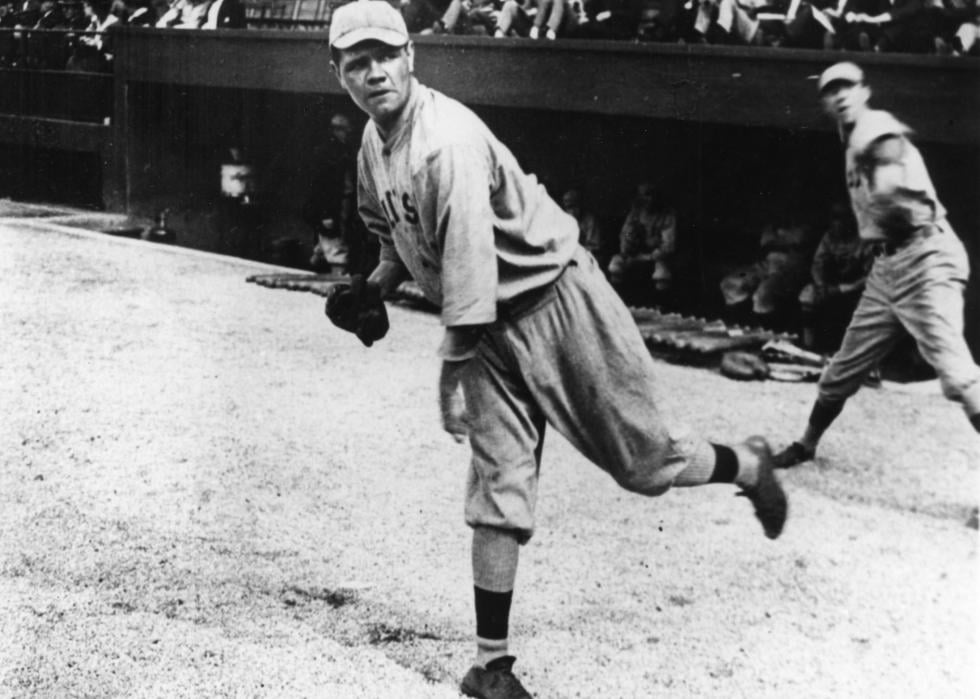
1918–1919: Babe Ruth pulls double duty for two seasons
Thanks to his fame, Babe Ruth is perhaps the best-known two-way player in baseball. Renowned for hammering 714 career home runs, Ruth’s career began in 1914 as a pitcher for the Boston Red Sox. Ruth eventually dropped pitching to focus on batting. However, he worked a couple of double-duty seasons where he both pitched and played as a position player.
In the first of those double-duty seasons, in 1918, Ruth had 382 plate appearances and 11 home runs, while also going 13-7 as a pitcher with a 2.22 earned run average, or ERA, over 166 1/3 innings. The next year, Ruth upped his batting numbers—543 plate appearances with 29 homers—while also maintaining a respectable pitching line. Ruth finished 1919 with a 9-5 record, 133 1/3 innings pitched, and a 2.97 ERA.
Ruth left the Red Sox after the 1919 season via an infamous sale to the New York Yankees. He never returned regularly to the mound after leaving Boston, although he did pitch five times over his 15-season tenure with the Yankees. His last appearance as a pitcher came in 1933 when, at the age of 38, he hit a home run while tossing a complete game, in a 6-5 win over his old Red Sox team.
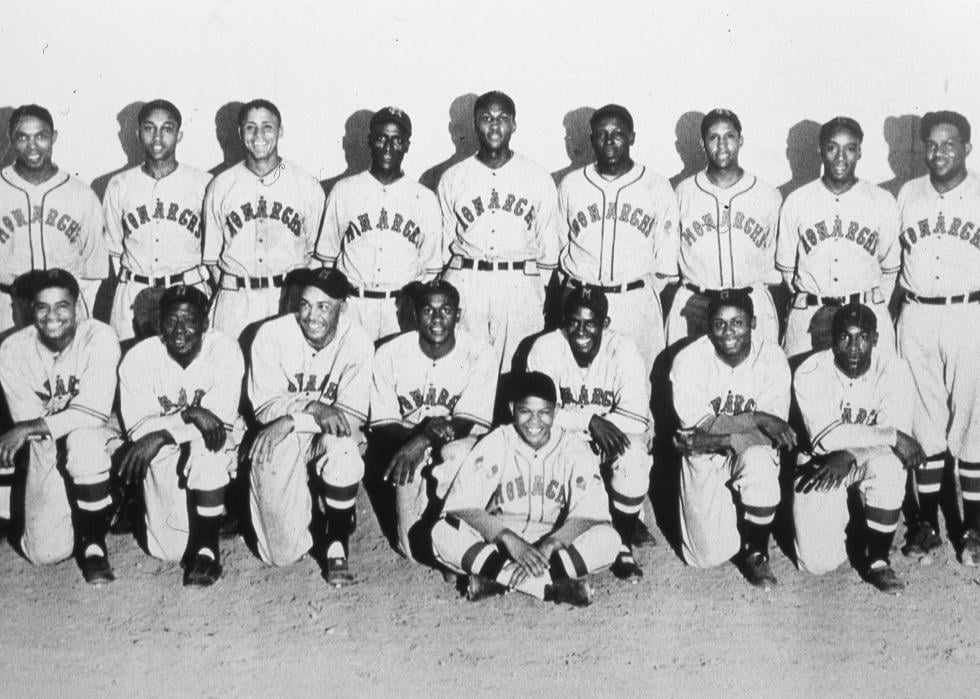
1920s–1930s: Bullet Rogan leads the way for Negro Leaguers
Immediately following Babe Ruth, Bullet Rogan stole the scene as baseball's most prolific two-way player. As a member of the Kansas City Monarchs in the Negro National League, Rogan had five seasons with 10-plus games pitched and 200-plus plate appearances between 1920 and 1928.
Rogan's best season occurred in 1922 when he tossed a 2.83 ERA over 193 2/3 innings while also swatting 15 homers and a .369 batting average over 283 plate appearances. That 1922 season is perhaps the most complete two-way season ever; Rogan snagged 4.6 WAR as a pitcher and 4.5 WAR as a batter, making him the first player to pick up four-plus WAR for both batting and pitching in the same season.
In total, 13 players in the Negro Leagues surpassed our qualification benchmark. Besides Rogan, the only other player to register multiple seasons was Harry Kenyon, who did so in 1921 for the Indianapolis ABCs and in 1925 for the Detroit Stars.
The last qualifying year for Negro Leaguers was 1930, when St. Louis Stars teammates Ted Radcliffe (nicknamed "Double Duty") and John Williams each accomplished the feat. Radcliffe's greatest two-way performance may have actually come in 1932, when he hit a grand slam in game one of a doubleheader at Yankee Stadium, and then tossed a shutout in the nightcap. Martín Dihigo and Leon Day also deserve mentions as solid two-way players, although they never eclipsed 10 games pitched and 200 plate appearances in a single year, most likely due to the Negro Leagues holding shorter seasons than the Majors.
Outside the Negro Leagues, Bob Smith and Bucky Walters operated as two-way players during the 1920s and 1930s, with both starting as position players before becoming pitchers several years into their Major League careers. However, neither player pitched and batted enough in the same season to hit our 10 games pitched and 200 plate appearances benchmark, because they infrequently played other roles once taking the mound.
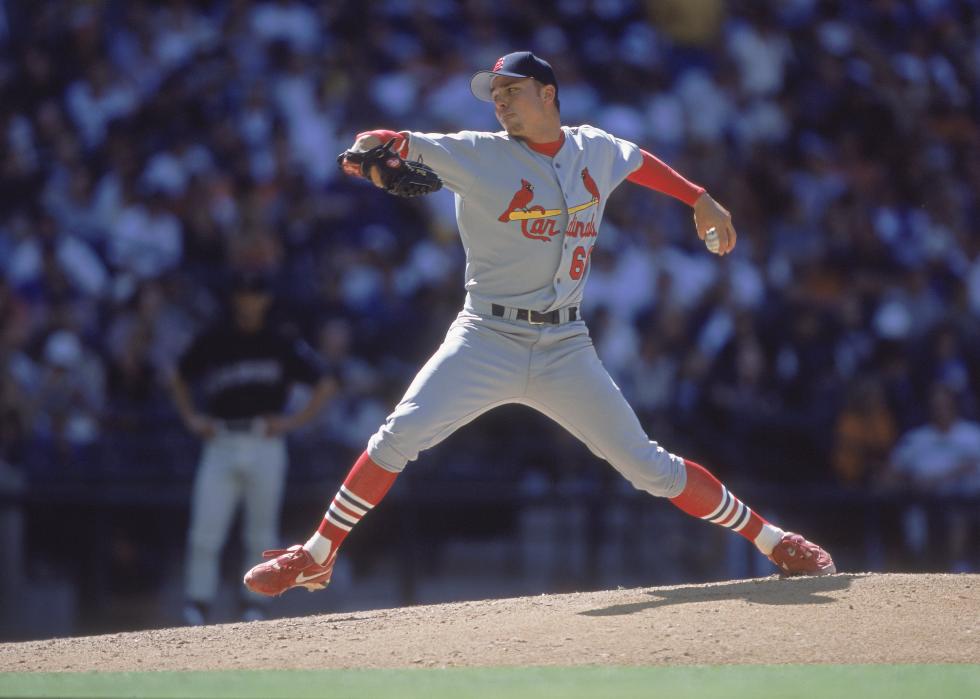
1940s–2010s: The two-way player enters a dark age
After World War II through the 2020s, just two players reached 10 games pitched and 200 plate appearances in a single season: René Monteagudo of the Philadelphia Phillies in 1945 and Willie Smith of the Los Angeles Angels in 1964. Monteagudo spent time in the outfield in 1945, making 225 plate appearances and batting .301, while also pitching 45 2/3 innings over 14 games in relief. Smith, meanwhile, struggled as a pitcher to start 1964 but found his groove at the plate and transitioned into an outfield role, where he ended up with 11 homers and a .301 batting average over 373 plate appearances.
Besides Monteagudo and Smith, several players during this two-way player drought spent time throughout their careers as pitchers and position players but any overlaps between those two roles were minimal. Notable players include Mel Queen, who transitioned from outfield to pitcher while with Cincinnati in the 1960s. Brooks Kieschnick did something similar, starting as a position player in 1994 and later moving to the mound in 2003 while playing for Milwaukee, where he also pinch hit. Rick Ankiel went in the opposite direction, beginning his career as a pitcher for St. Louis in 1999 before shifting to the outfield in 2007 after injury woes.
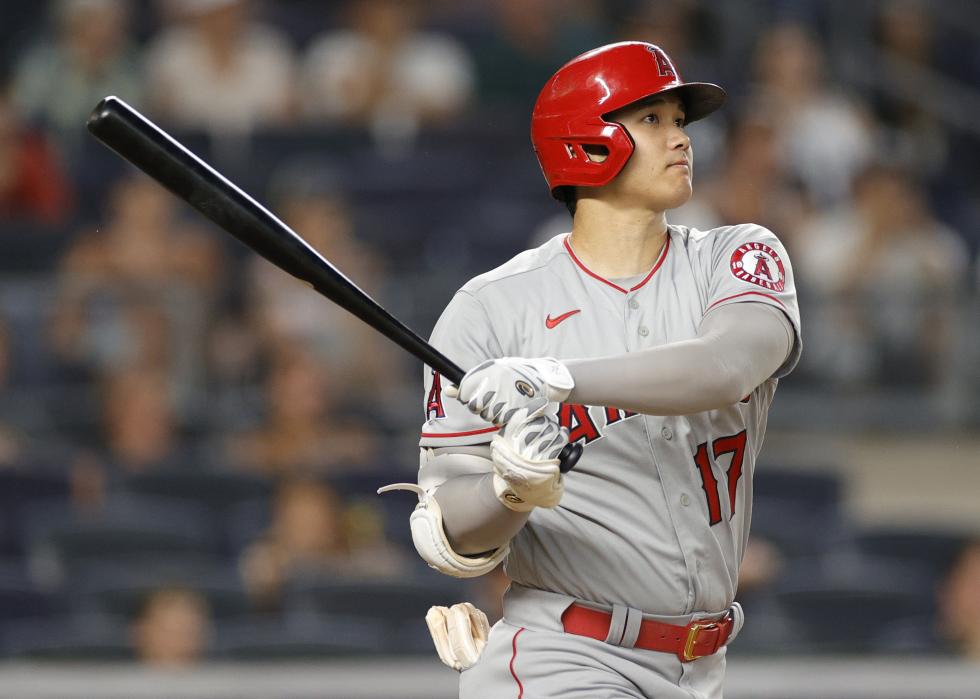
2018–present: Shohei Ohtani ends long dry spell
Roughly a century after Babe Ruth’s and Bullet Rogan’s two-way exploits, Shohei Ohtani burst on the scene with the Los Angeles Angels and set the majors on fire with his two-way capabilities. As a rookie, Ohtani hit 22 home runs in 367 plate appearances while also starting 10 games on the mound and pitching a 3.31 ERA over 51 2/3 innings.
Due to an injury-impacted 2019 and a COVID-19-shortened 2020, Ohtani’s next two seasons didn’t meet the 10 games pitched and 200 plate appearances qualifications in this article. However, his 2021 campaign was arguably one of the best two-way seasons of all time.
In 2021, Ohtani hit 46 home runs in 639 plate appearances while pitching a 3.18 ERA over 130 1/3 innings and en route to a 9-2 record. His combined innings pitched and plate appearances of 769 is a record (among qualifying two-way players), besting Ruth’s combined total of 676 in 1918. Ohtani joined Rogan to become just the second player to pick up at least four WAR in both pitching and batting (Ohtani’s WAR in 2021 tallied 4.1 for pitching and 4.9 for batting).
As we are still early in the 2022 season, it remains to be seen how Ohtani will progress as a two-way player. However, his potential looks bright: On Opening Day, Ohtani made history by becoming the first player in the American and National Leagues to open a season by throwing his team’s first pitch and taking his team’s first at-bat.



